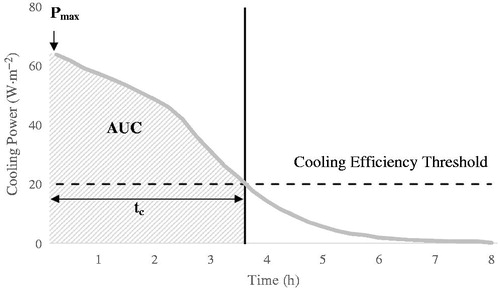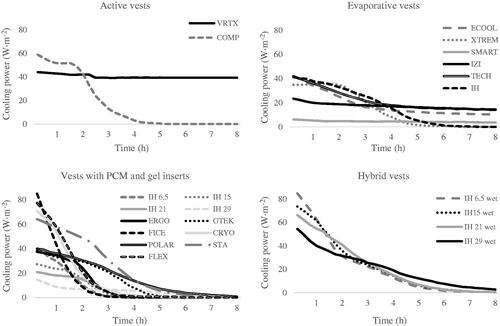Figures & data
Table 1. Basic information of the cooling vests, categorised according to the cooling concept used.
Figure 1. Graphic presentation of the parameters determined in the cooling capacity measurements. Pmax: maximal cooling power; Tc: cooling duration when P ≥ 20 W·m−2; AUC: area under the curve, indicating cooling capacity.

Figure 2. Cooling power of vests within each category over 8-h trial.

Table 2. Cooling capacity of the tested cooling vests.
Table 3. Thermal resistance of the tested cooling vests.
Table 4. Relative evaporative resistance (Re; %) of the activated cooling vests.
